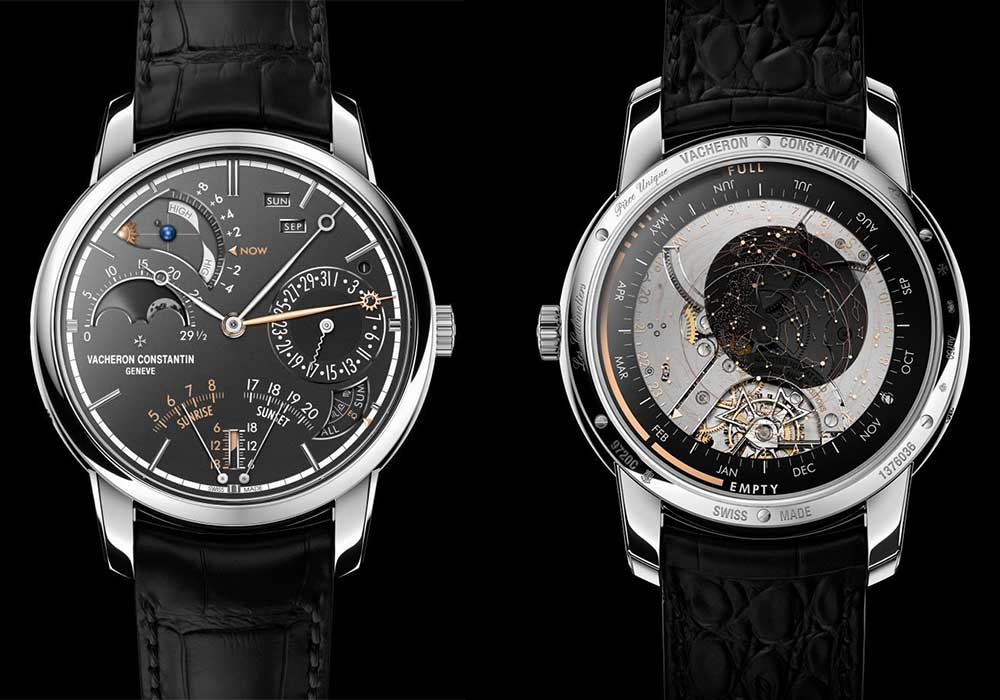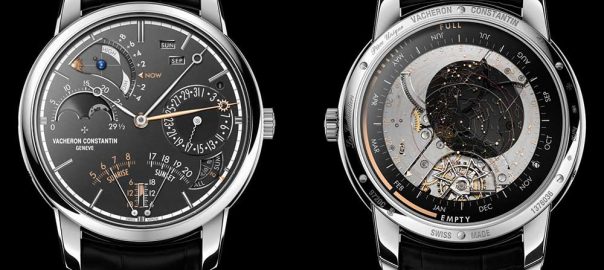WHEN A MASTER WATCHMAKER TAKES CONTROL OF THE STARS
After having dazzled the world with an incomparable timepiece embracing no less than 57 complications to celebrate its 260th anniversary, Vacheron Constantin renews the experience by showcasing an ultra-complex wristwatch powered by an extraordinarily groundbreaking calibre.
During the 18th century in Geneva, “cabinotiers” was the name given to craftsmen (watchmakers, engravers and jewellers) who made individually-commissioned, bespoke creations for a privileged circle of connoisseurs, in workshops known as “cabinets”, located on the top floors of buildings, in the attic spaces, where they could take optimal advantage of natural daylight. Although “cabinotiers” in their original sense no longer exist, Vacheron Constantin has immortalized the name, by using it for its collection of ever-so rare pieces, which includes the Cabinotiers Celestia Grand Complication 3600 timepiece, to be unveiled during the 2017 edition of the Salon International de la Haute Horlogerie (SIHH – International Fine Watchmaking Exhibition), which will take place in Geneva from 16 to 20 January.

The Cabinotiers Celestia Grand Complication 3600 is a dual-faced watch that could be qualified as ingenious as it hosts 23 complications, features a triple time display (civil, solar and sidereal) implemented by three independent geartrains, and offers around three weeks’ autonomy through its six barrels assembled in two rows of three. These intricate indicators are driven by an innovational Vacheron Constantin-created and -produced movement, the hand-wound mechanical 3600 calibre, housing 514 components and beating at a rhythm of 18,000 vibrations per hour (2.5 Hz), yet measuring only 8.7 thick, set in a 45 mm diameter white gold case.
The slate grey opaline dial showcases 15 complications, including civil time (the universal 24-hour-based clock where each hour comprises 60 minutes) displayed in the centre by two white gold hollow moon-tip hands. A second, rose gold minute hand, tipped with an open-worked sun, tells solar time. This time is calculated based on the hour angle indicated by the sun’s movement during the day for a given location. The variation between these two aforementioned time displays is measured by an instantaneous, running equation of time. The dial also boasts a perpetual calendar which, through its mechanical memory, automatically integrates 30 and 31-day months, 28 and 29 days for February and leap years (featured in an aperture). The day and month are revealed in two rectangular windows at 1 o’clock whilst the date ticks over in a counter incorporating a silvered serpentine hand at 3 o’clock. An aperture located at 9 o’clock proposes a specific moon phase and indicates age. The dial is complemented by various other displays: day/night and its duration, sunrise and sunset times, a mareoscope indicating tide levels and a 3D depiction of the Earth-moon-sun alignment as well as a counter comprising the signs of the zodiac, the seasons, solstices and equinoxes.
The Cabinotiers Celestia Grand Complication 3600 caseback, which centre stages a tourbillon, is made of two sapphire crystal discs: one etched with a sky chart illustrating the constellation as seen from the northern hemisphere and the other displaying sidereal time – obtained by measuring the movement of the stars in relation to the prime meridian and counts 4 minutes difference with civil time, and the four cardinal points. These displays are encircled by a large anthracite flange featuring the months of the year and the power reserve indicator.
This unique Vacheron Constantin masterstroke, which required five years of work from the initial vision to the finished piece, is stamped with the Hallmark of Geneva (Poinçon de Genève).
Price on request
By Sharmila Bertin
